Hello everybody! I hope you are having a great day.
In the first part of this blog series about photos I take or took in the past, I talked about some old, historic photos taken during WW2, here I want to share some photos of insects and arthropods I took (there will be spiders too in the next blog so do not go forward if you have arachnophobia!). Because I cannot post many pics, this blog will be split in two parts 2a and 2b. Enjoy the first part^^
I want to start with lovely red admiral:
Red Admiral (Vanessa atalanta)
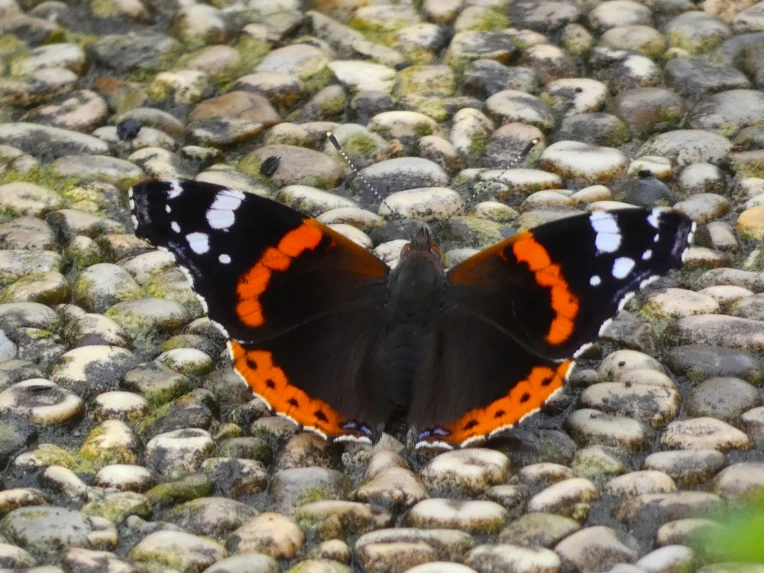
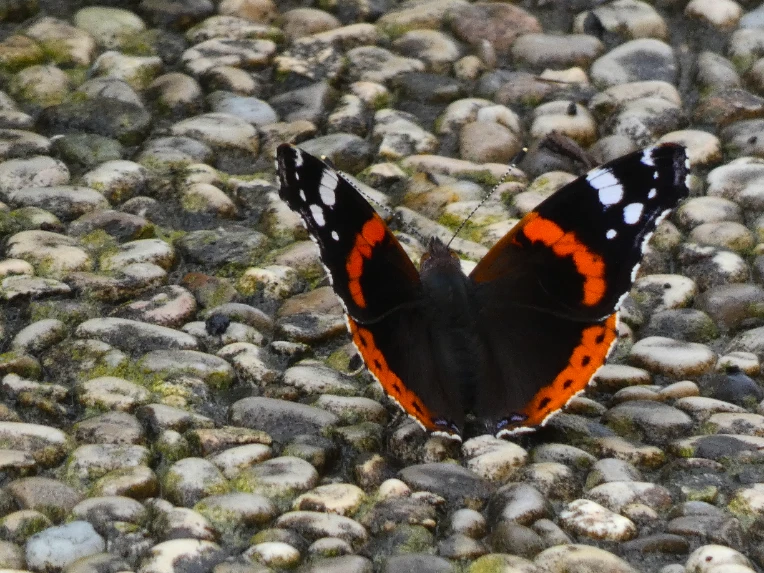
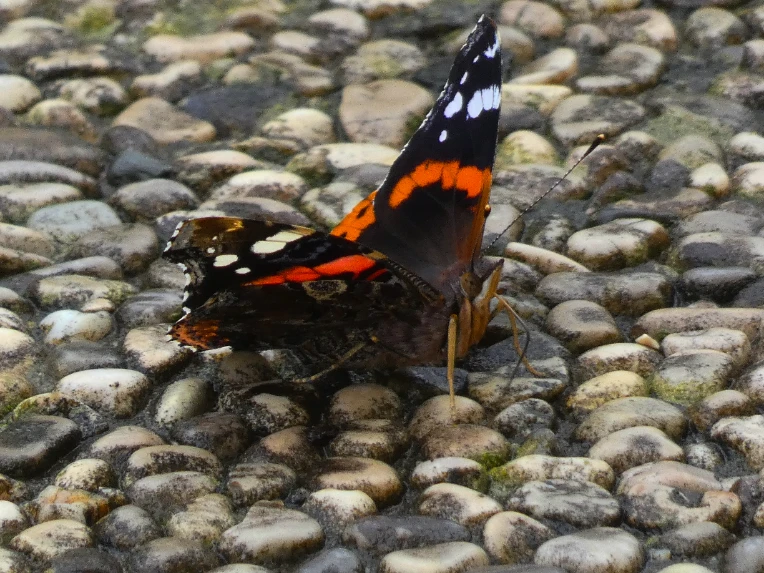
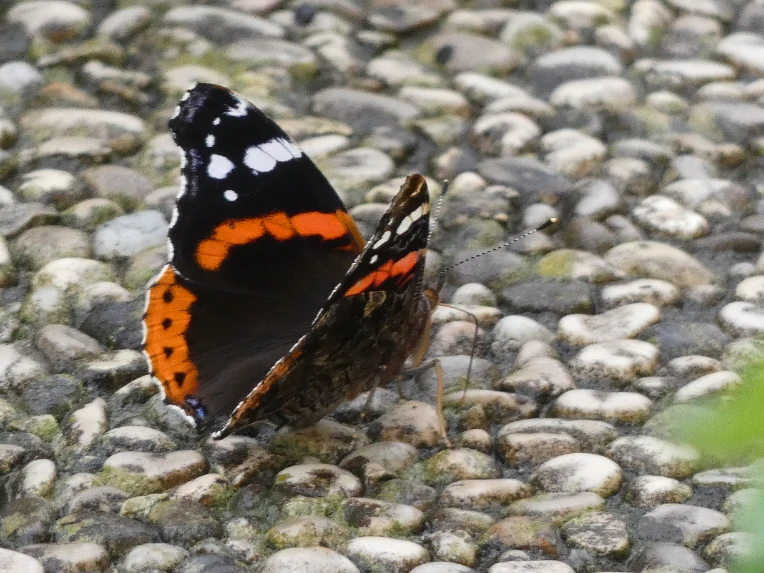

Red Admiral (Vanessa atalanta) is a well-characterized, medium-sized butterfly with black wings, red bands, and white spots. I could see and take several photos of this fella in my vegetable garden. It almost looked like he was posing on purpose to be photographed as I could take pics from different angles XD
The species is found in temperate regions of North Africa, North and Central America, Europe, Asia, and island regions of Hawaii (introduced if I recall well), and the Caribbean. Mals are territorial and perch during the afternoon until sunset. They patrol their territory by flying around the perimeter between 7 and 30 times per hour. On average, territory holders interact with intruders 10 to 15 times per hour. Only males of exceptional flying ability are able to chase off intruding males and successfully court females and this makes females to select only males with a territory. Wow, such demanding life for a male admiral! Respect.
In northern Europe, it is one of the last butterflies to be seen before winter sets in, often feeding on the flowers of ivy on sunny days. The red admiral is also known to hibernate, re-emerging individuals showing prominently darker colors than the first brood. The butterfly also flies on sunny winter days, especially in southern Europe. Whereas in North America, the red admiral generally has two broods from March through October.
Sometimes, especially in the female, the red band of the forewing bears a small white spot in the middle and this is why I think the specimen I photographed it's very likely a male.
Chrysolina rossia
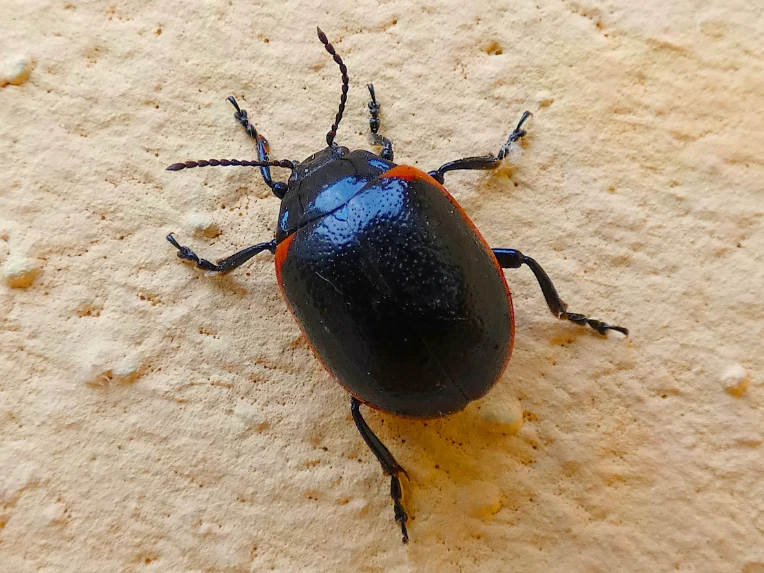
I am sure it's a Chrysolina sp. and I think it's likely a Chrysolina rossia due to its common presence in Italy and the trapezoid shape of the prothorax unlike Chrysolina sanguinolenta which has an arched prothorax (the species is not that present in Italy). The species belongs to subgenus Stichoptera. This is a very large genus consisting of about 450 described species and a further 250 subspecies included in 65 subgenera of which 23 are monotypic. It is a species primarily distributed in the Balkan Peninsula and Italy but reaching also France and Central Europe. Kippenberg (2010) lists it for Austria, Bosnia-Herzegovina, Bulgaria, Croatia, Czech Republic, France, Greece, Hungary, Italy, Romania, Slovakia, Slovenia, Switzerland and Serbia. In Switzerland, it is restricted to Ticino.
Polystes gallicus and Aspidapion sp.
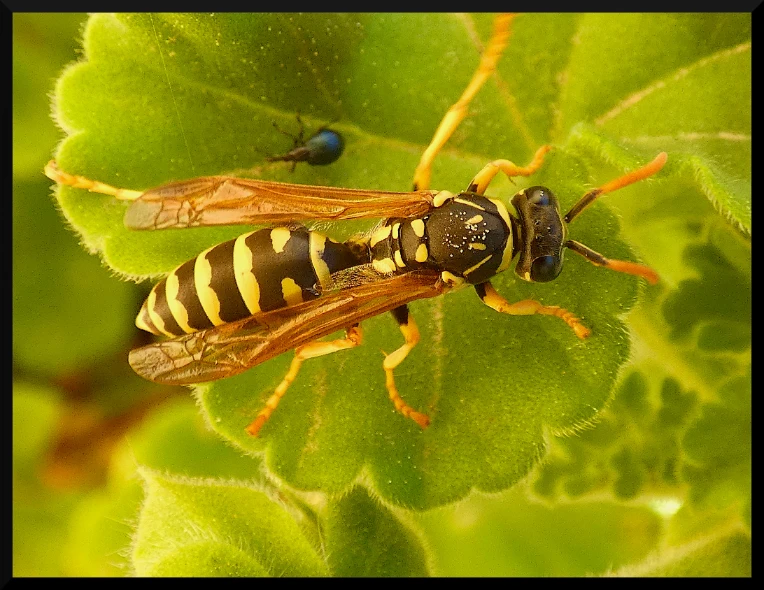
I was taking some pics of this paper wasp (Polystes gallicus) I noticed a small friend on this geranium leaf, a beetle belonging to the family Apionidae. Sadly the focus in on the wasp so I can't tell if it's an Aspidapion aeneum or an Aspidapion validum, I am more inclined it's an A. validum.
This has spent all night in the northern side of my house so the next day, after I noticed her, I took the wasp and put on geranium as sun hits the flower during morning. This way the heat coming from the sun might have helped her a little but since we are in autumn she will likely die soon. Rest in peace.
Aspidapion is a genus of beetles belonging to the family Brentidae. The species of this genus are found in Europe and Africa(1). Brentid larvae are fungivorous, eating fungi on dead wood. The adults are usually long and dark, and can be as small as 1.5 mm or as long as 90.
Polistes gallicus is a species of paper wasp found in various parts of Europe, excluding England, Denmark, and Scandinavia, from warmer climates to cooler regions north of the Alps, and uses an oral secretion to construct their nests, which consist of a combination of saliva and chewed plant fibers. This structural mixture physically protects the nest from various harsh elements and from weathering over time. Bright yellow and black markings are the most distinctive traits of this species but it may be separated from allies through the following traits:
females are identified by having 12 antennal segments and 6 abdominal segments. The antennae are orange and paler on the ventral surface than in many allies and have yellow-marked scapes. The malar space is short, under 0.75 times the distance between the lateral ocelli, and is black. They have slender mandibles that are mostly colored black with an excentric yellow spot on each. In contrast, the clypeus is yellow and often with a small but distinct black spot or band. As in many species within the subgenus, the mesoscutum has a pair of developed spots. Both the spots on the propodeum and continuous band on the fourth abdominal sternite are wide. Unlike species such as P. dominula, P. gallicus has a mostly black hypopygium(2) (a modified abdominal segment, in some insects, which supports the copulatory apparatus).
https://pmc.ncbi.nlm.nih.gov/articles/PMC5674218/pdf/zookeys-713-053.pdf
males are identified by having 13 antennal segments and 7 abdominal segments. The head is roughly triangular as viewed from the front with a curved clypeus. The apical half of the antennae is entirely orange-yellow, and the final segment is slightly under twice as long as wide. The pronotum has a yellow band that widens toward the sides as well as short, straight hairs. The mesosternum is largely yellow, more so than in some allies. Both the mesoscutum and scutellum typically have distinct spots. The abdomen has the final sternite entirely black(3).
P. gallicus is one of 27 members of the subgenus Polistes (Polistes), which are typically very similar black-and-yellow species. This similarity has resulted in taxonomic complications in older literature. For instance, many references prior to 1985 misapplied the name to the European paper wasp, P. dominula. In terms of coloration, P. gallicus typically has yellow spots on the mandibles as well as a black hypopygium whereas P. dominula has often entirely black mandibles and always a largely yellow hypopygium(4).
P. gallicus is also very closely related to P. biglumis and P. mongolicus, which are members of the same species group(5). The former synonyms, P. foederatus and P. mongolicus, were restored from synonymy following revision of the genus in 2017 and are considered as distinct species again(6).
Cetonia aurata
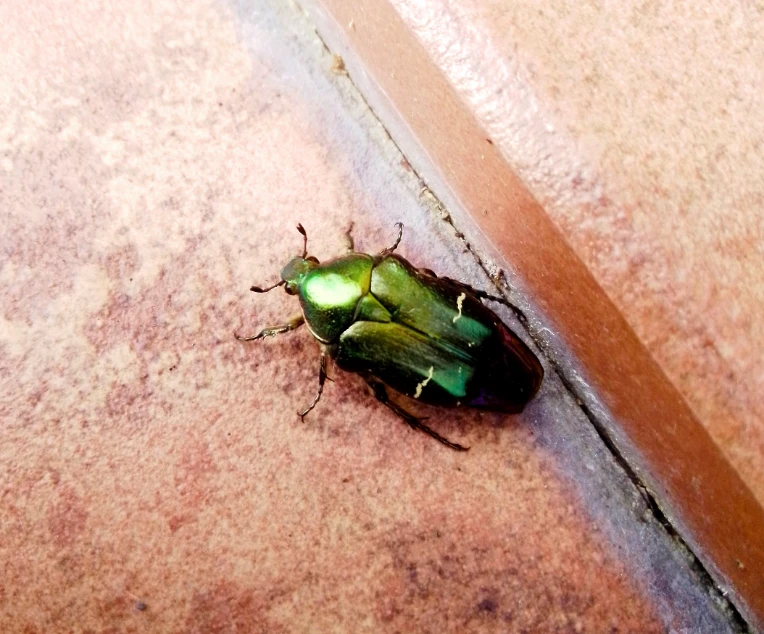
This is a photo I took two years ago. This is a female green rose chafer (Cetonia aurata) I photographed in my house before releasing her in my garden. It is a 20 mm long beetle with a metallic vivid green colouration and a distinct V-shaped scutellum that can be found in southern and central Europe and in the southern part of the United Kingdom. South East Asia, especially in the countryside and outlying islands of Hong Kong, is another place where you can find them. They have a fast flight and feed on pollen, nectar, and flowers, especially roses hence the common name. Larvae have a C-shaped body with a firm, wrinkled, hairy look, a small head, and tiny legs. They grow very quickly and will have moulted twice before the end of autumn. They have a two-year life cycle. They pupate in June or July.
One might think that the colour is natural but it is created structurally. The colour is made by microscopically structured surfaces fine enough to interfere with visible light instead of pigments, although some structural coloration occurs in combination with pigments. It happens because of the reflection of mostly circularly-polarised light; like other scarabs, this is left circularly polarised. Besides the common green there is also copper, grey and black. Some specimens have white speckles (like this one) while some have very few or none at all.
I want to share with you some new photos of another specimen I saw these days in my garden:

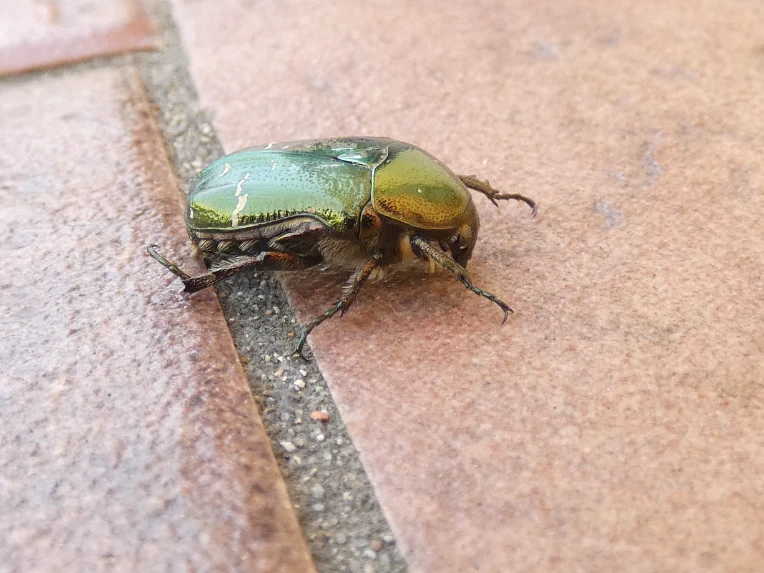
If you want to look around for adult rose chafers May to October are the best months, when they are active. Curiously I saw this beauty on 31st August. It can be confused with the much more rare noble chafer (Gnorimus nobilis), to identify them keep in mind that on the noble chafer the scutellum is an equilateral triangle, but on the rose chafer it is an isosceles triangle.
Fun fact: when viewed through a right circular polariser, the beetle appears to be colorless.
References and footnotes:
(1) "Aspidapion Schilsky, 1901". www.gbif.org.
(2) Schmid-Egger, Christian; Kees van Achterberg; Rainer Neumeyer; Jérôme Morinière; Stefan Schmidt (2017). "Revision of the West Palaearctic Polistes Latreille, with the descriptions of two species – an integrative approach using morphology and DNA barcodes (Hymenoptera, Vespidae)". ZooKeys (713): 53–112. doi:10.3897/zookeys.713.11335. PMC 5674218. PMID 29134040.
(3) Ibidem.
(4) Ibidem.
(5) Larch, Rainer; Hannes Baur; Gaston-Denis Guex; Christophe Praz (2004). "A new species of the paper wasp genus Polistes (Hymenoptera, Vespidae, Polistinae) in Europe revealed by morphometrics and molecular analyses". ZooKeys (400): 67–118. doi:10.3897/zookeys.400.6611. PMC 4023243. PMID 24843256.
(6) Schmid-Egger, Christian; Kees van Achterberg; Rainer Neumeyer; Jérôme Morinière; Stefan Schmidt (2017). "Revision of the West Palaearctic Polistes Latreille, with the descriptions of two species – an integrative approach using morphology and DNA barcodes (Hymenoptera, Vespidae)". ZooKeys (713): 53–112. doi:10.3897/zookeys.713.11335. PMC 5674218. PMID 29134040.
Simoes1000
You're the user of the day.
ShangXian
Yes, I discovered it today^^
it was a nice surprise that added joy to another great joy: meeting my high school classmates after so many years!